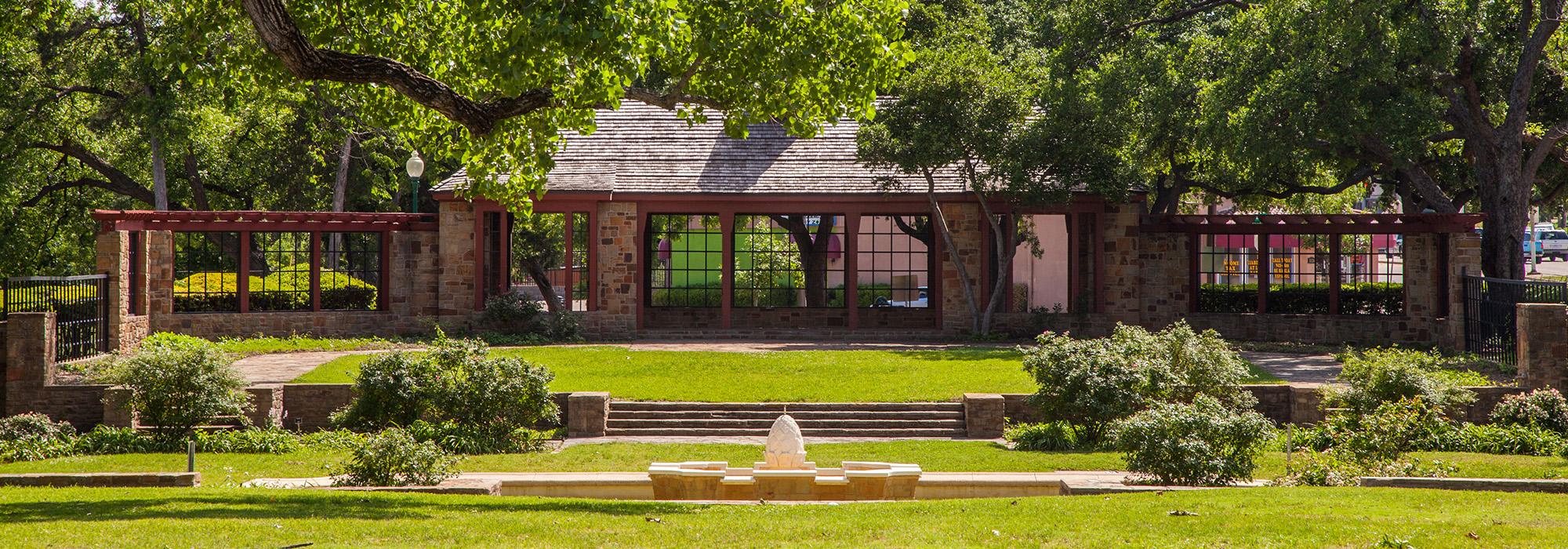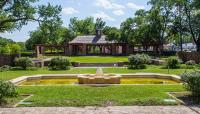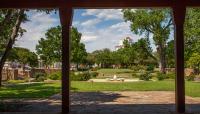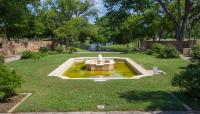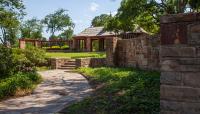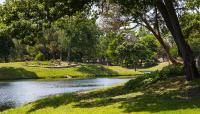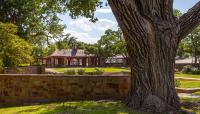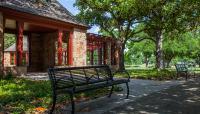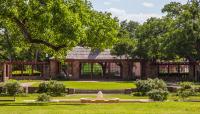Landscape Information
Opened in 1906 as a private amusement park by Charles Mangold, the site was dubbed “the Southwest’s Greatest Playground.” After subsequent owners ran into financial troubles, the City of Dallas purchased the property in 1914. Five years later George Kessler developed a master plan for the site but no evidence of that plan’s construction survives. Local landscape architect Wynne B. Woodruff designed a formal rose garden in 1934 and the Oak Cliff Society planted the initial 2000 rose bushes. Landscape architects Hare & Hare designed a Beaux Arts stone pergola in 1944 to enclose the rose garden. The WPA performed most of the construction for both the rose garden and pergola.
Located in the Lake Cliff Historic District, the 45-acre park is built around a sunken lake that forms the core of the naturalistic landscape. Bounded by bald cypress, eastern red cedar, pecans, and cottonwoods, the lake reflects the downtown Dallas skyline to the northeast. The park’s northwest entrance, marked by the pergola, encloses the multi-tiered rose garden. Its sandy yellow and burnt orange stonework references the native Texas color palette. Employing a cruciform design, the pergola and rose garden enclose a rectangular pool and sculptural fountain executed in a rosebud motif. The longitudinal axis of the pool leads from the street down a wide staircase to the lake edge. Studio Tincup and the Friends of Oak Cliff Park restored the rose garden in 2008 and, two years later, restoration of the pergola was completed by Dallas Park and Recreation.



